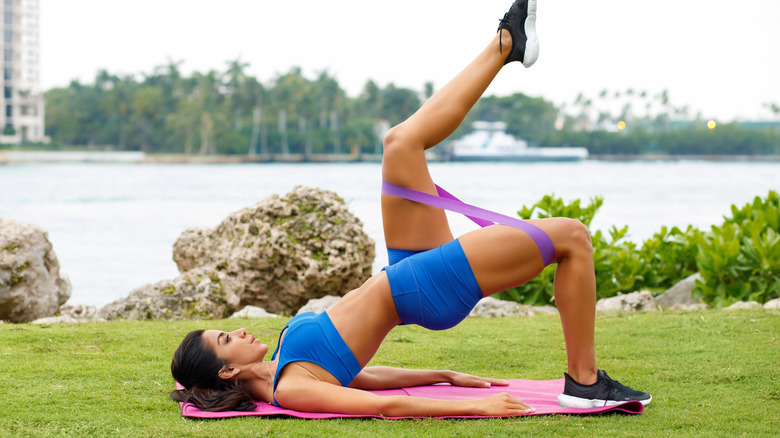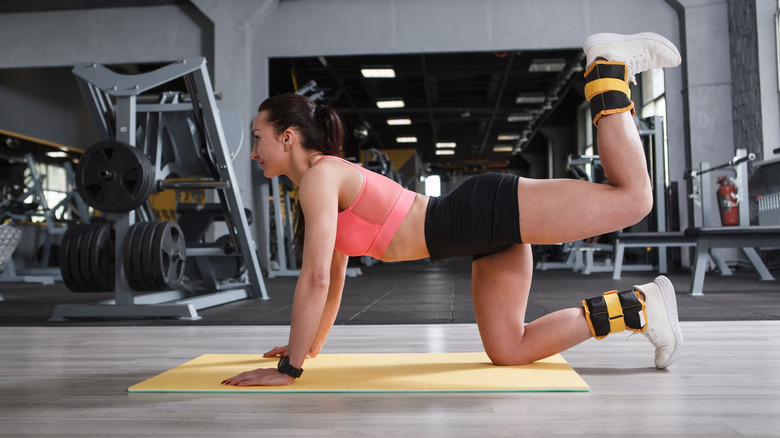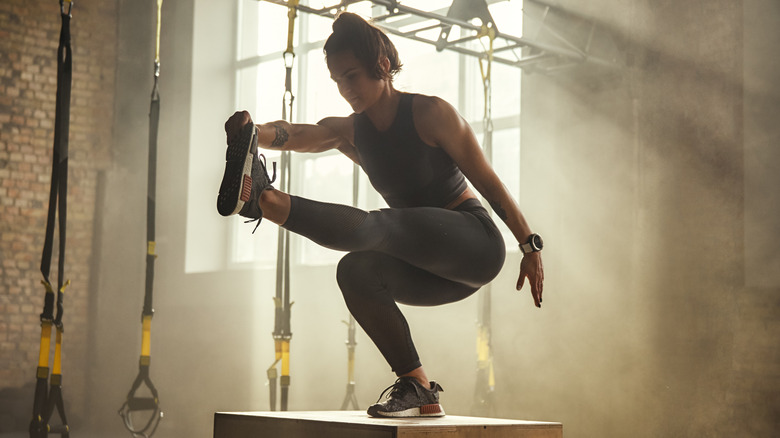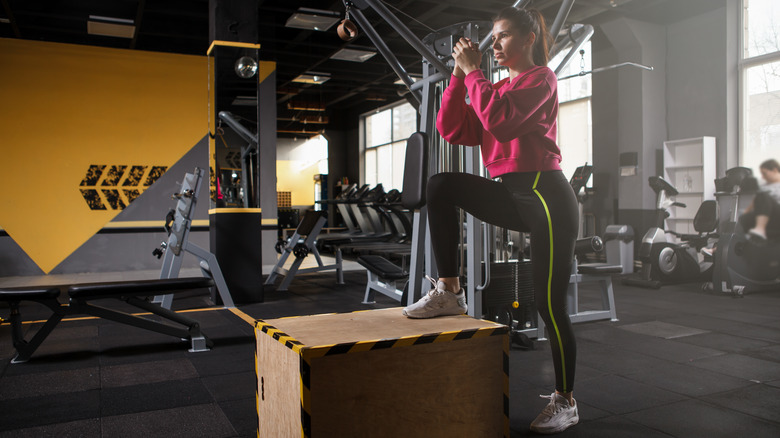Glute Exercises That Actually Work
The media is flooded with "booty-blasting" workouts and glute exercises, from squats and hip thrusts to step-ups. Perhaps you've already tried some of them, but you're still struggling to build a strong, firm butt.
The thing is, you must work your entire body to get results. While it's possible to isolate the glutes, compound movements are far more effective for hypertrophy, or muscle growth. Lunges, deadlifts, single-leg squats, and other compound exercises hit multiple muscle groups at once, making it easier to gain size and strength. For example, barbell squats engage the gluteus maximus, quads, hamstrings, and calves, notes the National Academy of Sports Medicine. What's more, this compound movement hits the deep core muscles, which may improve your balance and overall fitness.
Ideally, your lower body workouts should include a mix of compound and isolation exercises targeting all three gluteal muscles, says the International Sports Sciences Association (ISSA). Also, it's important to gradually increase the weight or resistance and activate the muscles you want to train. ISSA recommends six to 12 reps per set for each exercise.
Remember to keep your workouts varied and challenge your muscles. This can be done by increasing the number of reps or sets, lifting heavier loads, or adding new moves to the mix. For starters, though, try these glute exercises to sculpt your butt and build lower body strength.
Activate your glutes with donkey kicks
Quadruped hip extensions, or donkey kicks, elicit the greatest activation of the gluteal muscles, according to a 2006 study conducted by the American Council on Exercise (ACE). Even without weights, this basic movement is more effective than the barbell squat, single-leg squats, lunges, step-ups, and leg presses.
To perform this movement, get on all fours and brace your core muscles. Lift one leg with the knee bent at 90 degrees until your quads are parallel to the floor. Squeeze your glutes, hold the contraction for a second or two, and then slowly lower back your leg. Repeat on the opposite side. Complete eight to 12 reps with each leg, suggests ACE.
Maintain a neutral spine at all times and use a slow, controlled motion, recommends Verywell Fit. Avoid moving your neck up and down or to the sides and keep your hips in place.
As you progress, try more advanced variations, such as the standing hip extension or donkey kicks with resistance bands, to work your glutes from all angles. You can also use ankle weights for increased resistance.
Set your glutes on fire with pistol squats
The single-leg squat, or pistol squat, might be one of the best glute exercises out there, notes ISSA. This unilateral movement hits nearly every muscle in the lower body, including your quads, glutes, hamstrings, and calves. At the same time, it builds core strength and may improve your balance and coordination, says BOXROX. What's more, single-leg squats put less stress on the spine than conventional squats, making them suitable for those with back pain.
Are you up for a challenge? If so, begin by standing with your arms extended in front of you. Brace your core, bend your right knee, and bring your hips back while holding the other leg straight in front of your body, explains BarBend. Continue to lower your body until your left leg is parallel to the floor. Maintain the contraction for a few seconds and then slowly return to the starting position. Repeat with the other leg.
This compound exercise can be difficult for beginners, so don't expect to get it right from day one. Consider using a suspension training system like TRX or use a bench for support in the first few weeks. You can also lower yourself down onto a chair or plyo box or place your hands on a squat rack to avoid falling backward.
Build stronger glutes with step-ups
Clinical research conducted by ACE suggests that step-ups are some of the most effective glute exercises, despite their apparent simplicity. This fun yet challenging movement can be performed with or without weights and has several variations for all fitness levels. With regular practice, it will improve your balance, correct muscle imbalances, and build lower body strength, explains MasterClass.
To get started, place a bench or plyo box in front of you. Brace your core, step onto the platform with your right foot, and squeeze your glutes. Keep your back straight and your shoulders back. Bring your other foot up and then slowly return to the initial position by lowering your right foot toward the ground. Do the same with your left foot and repeat.
For an extra challenge, hold a dumbbell in each hand or place a light barbell on your back. Another option is to hold a kettlebell or medicine ball at chest level.
In addition to these exercises, you could also try lunges, Bulgarian-split squats, glute bridges, or single-leg deadlifts. The barbell back squat is a great choice, too, as it targets all the major muscles in the lower body.
What matters most is to be consistent and stick to your workouts. Train your glutes once or twice a week, eat for your goals, and give your body time to recover from exercise.




